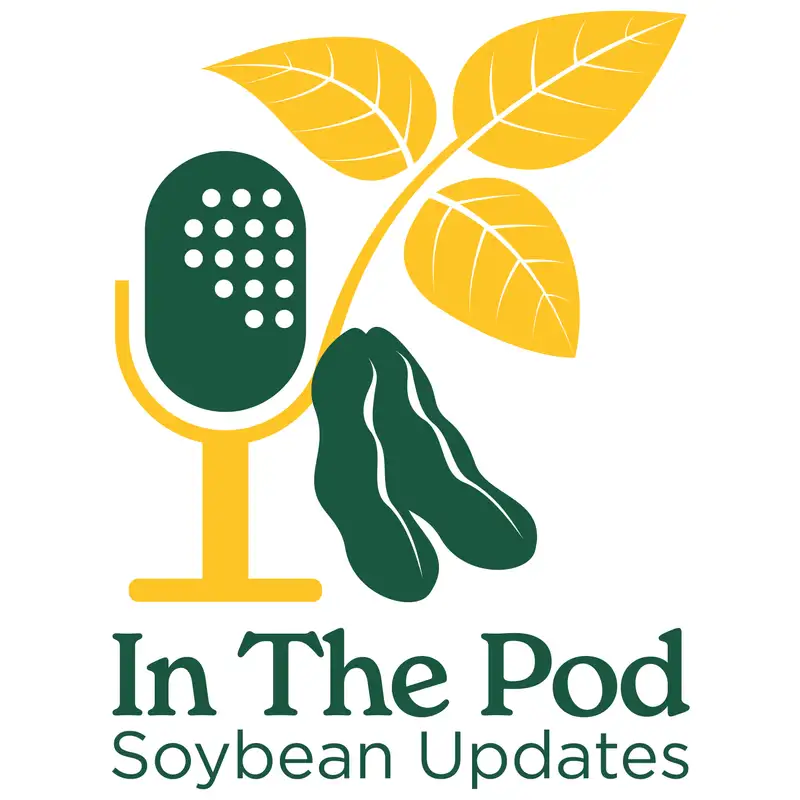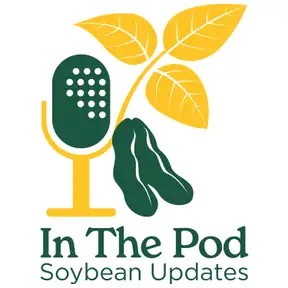04/10/25 Digging Deep: The Secrets Behind Soil Health
You're listening to In The Pod, soybean updates, a weekly trek into the latest soybean information from NDSU Extension. Farming can require some big picture thinking, especially when it comes to soil health. Carlos Pires, NDSU Extension soil health specialist, has some healthy information. Carlos, what are some of the basic soil health principles?
Carlos Pires:Yes. Now this is a good question. And when we are thinking in principles, I wanna make it clear that principles are different than practices. And I'm saying that because principles you can implement anywhere in the world. And then the practices, they are more specific about the region you are in. So there are different ways to create the classes of the principles, but the way I like to go is with minimize disturbance, and then we have practices within minimize disturbance that you can implement such as no tillage or strip tillage, which is is a very good way to minimize disturbance. And also minimum tillage can be an option in there, although it's not one of the favorite ones. Then we have maximize soil cover, which helps to prevent erosion. And what practice for that could be cover crops or residue management. Make sure you have some cover for the fall and winter. Then we have maximize biodiversity, which is important to think in crop rotation. So plant diversity in there are just one example here to balance the quality of the residue. Just have a legume such as soybean in there. Cover crops also important. And here's where I like to add crop livestock integration. I myself do not consider crop livestock integration one principle because in some regions, it's more challenging to implement, but crop livestock is incredibly important for biodiversities. It's an amazing practice that whenever you can implement, you will benefit from that. And then lastly, maximize continuous living roots. It's really reduce the fallow time. Just make sure we have always something growing or whenever we can to have something growing. And these principles are really important because this will allow farmers to make the most efficient use of external inputs such as, like, seeds, fertilizer. And these things are really expensive, so we need to make a good use of this.
Bruce Sundeen:How quickly do soil health practices yield benefits?
Carlos Pires:Yeah. Soil health is not something that would change from today to tomorrow. Right? So soil health, when you implement these practices, you shouldn't expect a huge benefit for implementing cover crop or no tillage from one year to another. You need persistence and is a long term investment. One of the things that we always want with soil health is to have water availability. So, you know, those years that are very dry, so we want that water in there. But it takes a long time, and we are still doing research on that to find that answer. But the journey of soil health starts usually with biological activity, which will then transform the residue into organic matter, which will increase the amount of nutrients that are being naturally released into the system, which will then improve the soil structure and store more water or infiltrate more water. And then depending where you are in the state, maybe you don't want more water, but you want more air. So it's drainage. So that also happens when implementing soil health practices in the long term.
Bruce Sundeen:Carlos, how do growing soybeans benefit soil health?
Carlos Pires:Yeah. So legumes in general, and soybean is just one of them, is really important on the process of organic matter turnover. I know this is a complex term, but it's pretty much the rate of our residue will be transformed inorganic matter. So substrate quality, and I can translate that into residue quality, is important. So soybean helps to decrease the amount of carbon per unity of nitrogen that we have, which makes it easier for microbes to decompose. So a good comparison would be soybean is more like a chocolate, while some grasses will be more like something harder to eat. So the more legumes we have in the system, the easier it is. A balance is really important in there.
Bruce Sundeen:Thanks, Carlos. Our guest has been Carlos Pires, NDSU Extension soil health specialist. You're listening to In the Pod, soybean updates, a weekly trek into the latest soybean information from NDSU Extension supported by the North Dakota Soybean Council.

